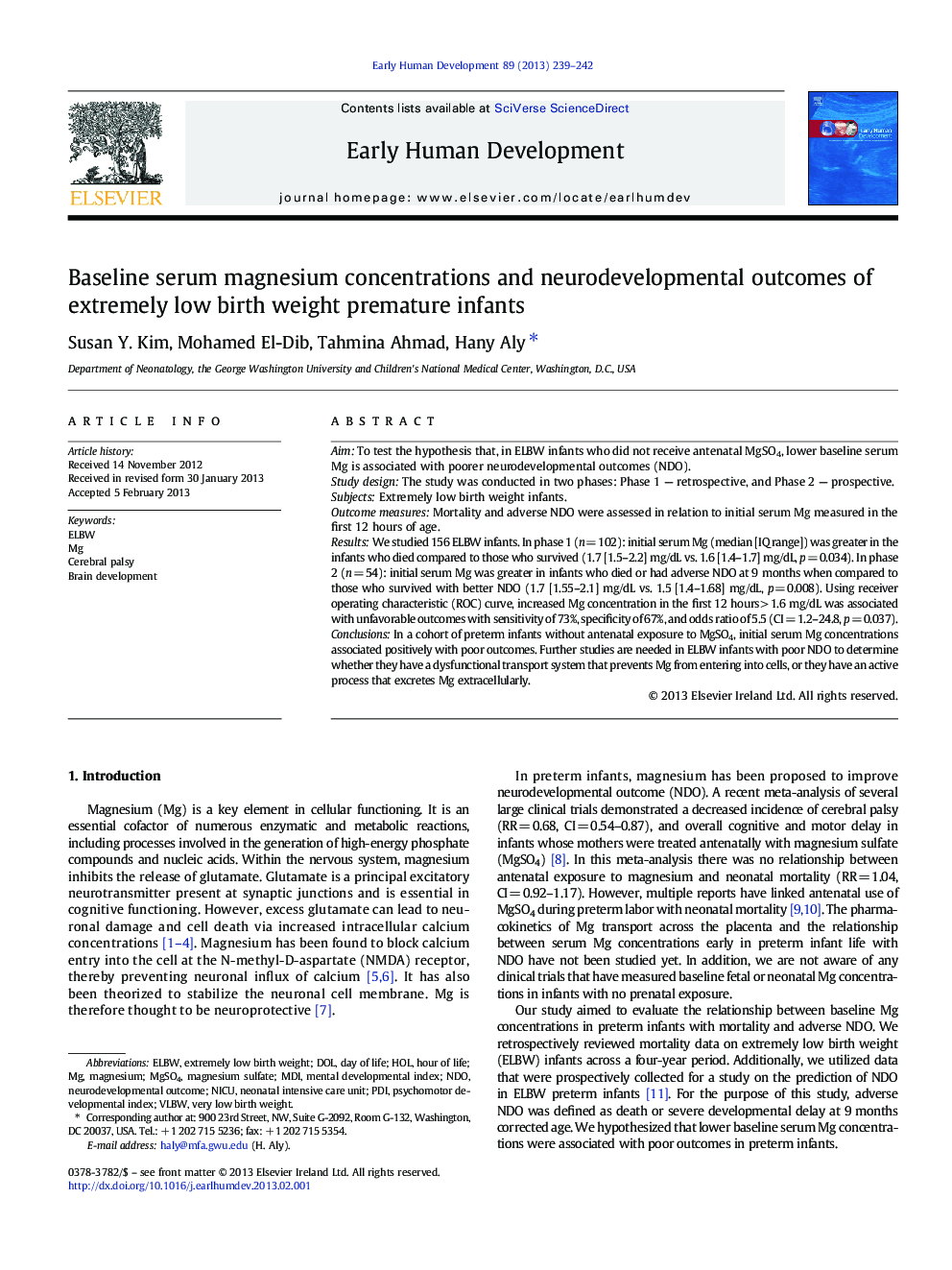| Article ID | Journal | Published Year | Pages | File Type |
|---|---|---|---|---|
| 3917095 | Early Human Development | 2013 | 4 Pages |
AimTo test the hypothesis that, in ELBW infants who did not receive antenatal MgSO4, lower baseline serum Mg is associated with poorer neurodevelopmental outcomes (NDO).Study designThe study was conducted in two phases: Phase 1 — retrospective, and Phase 2 — prospective.SubjectsExtremely low birth weight infants.Outcome measuresMortality and adverse NDO were assessed in relation to initial serum Mg measured in the first 12 hours of age.ResultsWe studied 156 ELBW infants. In phase 1 (n = 102): initial serum Mg (median [IQ range]) was greater in the infants who died compared to those who survived (1.7 [1.5–2.2] mg/dL vs. 1.6 [1.4–1.7] mg/dL, p = 0.034). In phase 2 (n = 54): initial serum Mg was greater in infants who died or had adverse NDO at 9 months when compared to those who survived with better NDO (1.7 [1.55–2.1] mg/dL vs. 1.5 [1.4–1.68] mg/dL, p = 0.008). Using receiver operating characteristic (ROC) curve, increased Mg concentration in the first 12 hours > 1.6 mg/dL was associated with unfavorable outcomes with sensitivity of 73%, specificity of 67%, and odds ratio of 5.5 (CI = 1.2–24.8, p = 0.037).ConclusionsIn a cohort of preterm infants without antenatal exposure to MgSO4, initial serum Mg concentrations associated positively with poor outcomes. Further studies are needed in ELBW infants with poor NDO to determine whether they have a dysfunctional transport system that prevents Mg from entering into cells, or they have an active process that excretes Mg extracellularly.
